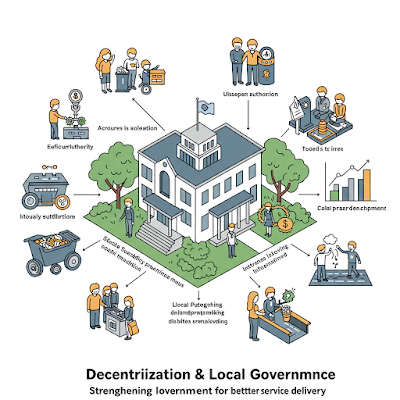Infrastructure development is a cornerstone of economic growth and social progress. Governments worldwide face challenges in financing and executing large-scale infrastructure projects, leading to increased reliance on Public-Private Partnerships (PPP). These partnerships allow governments to collaborate with private entities to develop, operate, and maintain critical infrastructure while leveraging private sector efficiency and investment. In this article, we explore the role of PPP in infrastructure development, its challenges, and notable success stories.
Understanding Public-Private Partnerships (PPP)
A Public-Private Partnership (PPP) is a long-term collaboration between government agencies and private sector companies for the development, operation, and maintenance of public infrastructure. This model enables resource sharing, risk mitigation, and improved service delivery.
Types of PPP Models
-
Build-Operate-Transfer (BOT) – The private sector builds and operates the infrastructure before transferring it back to the government.
-
Design-Build-Finance-Operate (DBFO) – The private sector handles the entire lifecycle, from design to operation.
-
Lease-Develop-Operate (LDO) – The private sector leases an existing public facility, improves it, and operates it.
-
Joint Ventures – The government and private sector jointly invest and manage the infrastructure.
-
Service Contracts – Private companies provide specific services within a public infrastructure project.
Challenges in PPP Infrastructure Development
While PPPs offer numerous benefits, several challenges can impact their effectiveness:
1. Financial Risks and Uncertainty
-
Large-scale projects require substantial capital investment, posing financial risks to private investors.
-
Unstable economic conditions or cost overruns can lead to project delays or failures.
2. Regulatory and Legal Barriers
-
Complex approval processes and regulatory requirements can hinder project execution.
-
Inconsistent policies and legal frameworks across different regions create uncertainty for investors.
3. Risk Allocation and Management
-
Determining the appropriate distribution of risks between public and private entities is crucial.
-
Poor risk allocation can lead to disputes and project inefficiencies.
4. Political and Social Challenges
-
Changes in government policies or political instability can affect long-term PPP agreements.
-
Public opposition to privatization and tariff hikes can create resistance to PPP projects.
5. Project Delays and Cost Overruns
-
Bureaucratic red tape, land acquisition issues, and unforeseen circumstances can delay projects.
-
Inefficient contract management may lead to budget overruns and compromised service quality.
Success Stories of PPP in Infrastructure Development
Despite the challenges, numerous PPP projects have been successfully implemented across the globe, showcasing their potential for infrastructure development.
1. The London Underground (UK)
The UK government collaborated with private firms to upgrade and modernize the London Underground system. Through a PPP agreement, significant improvements were made in train services, safety, and station facilities, enhancing public transport efficiency.
2. The Delhi Metro (India)
The Delhi Metro, one of India's most successful PPP projects, was developed through a partnership between the government and private players. The project revolutionized urban transportation in Delhi, reducing congestion and pollution while providing a reliable and efficient transit system.
3. Queen Alia International Airport (Jordan)
Jordan partnered with private investors to redevelop the Queen Alia International Airport, enhancing its capacity and operational efficiency. The PPP model enabled world-class airport infrastructure, boosting tourism and economic growth.
4. The Gautrain Rapid Rail (South Africa)
The Gautrain project, a high-speed rail network in South Africa, was implemented through a PPP arrangement. This project improved urban mobility, reduced travel times, and contributed to economic development.
5. The Sydney Desalination Plant (Australia)
To address water shortages, the Australian government partnered with the private sector to build and operate a desalination plant in Sydney. This project ensured water security and resilience against drought conditions.
Best Practices for Successful PPP Implementation
To maximize the benefits of PPPs in infrastructure development, stakeholders should adopt the following best practices:
1. Clear Legal and Regulatory Frameworks
-
Establish transparent policies and guidelines to attract private investors.
-
Simplify approval processes to reduce delays and bureaucratic inefficiencies.
2. Effective Risk Allocation
-
Clearly define risk-sharing mechanisms to protect both public and private interests.
-
Conduct thorough risk assessments before project initiation.
3. Strong Political and Public Support
-
Ensure political stability and government commitment to long-term projects.
-
Engage local communities to address concerns and build public trust.
4. Robust Financial Planning and Funding Models
-
Develop sustainable financing mechanisms, including blended finance and long-term funding strategies.
-
Offer incentives and guarantees to attract private sector participation.
5. Performance Monitoring and Evaluation
-
Implement monitoring frameworks to track project progress and performance.
-
Establish mechanisms for contract enforcement and dispute resolution.
Future of PPP in Infrastructure Development
The future of PPP in infrastructure development looks promising, with emerging trends shaping its evolution:
1. Technology-Driven Infrastructure
-
Integration of smart technologies, IoT, and AI to improve project efficiency.
-
Digital solutions for infrastructure monitoring, maintenance, and data analytics.
2. Green and Sustainable Infrastructure
-
Focus on renewable energy, eco-friendly transport, and climate-resilient projects.
-
PPPs for clean energy initiatives, such as wind farms and solar power plants.
3. Expansion in Emerging Markets
-
Increasing PPP adoption in developing countries to address infrastructure gaps.
-
Partnerships with international financial institutions for large-scale development projects.
4. Increased Public Engagement
-
Greater emphasis on community participation in decision-making.
-
Transparent governance frameworks to enhance public trust in PPP projects.
Conclusion
Public-Private Partnerships (PPP) play a crucial role in modern infrastructure development, bridging the gap between public needs and private sector expertise. Despite challenges such as financial risks, regulatory hurdles, and political uncertainties, successful PPP projects worldwide highlight their potential for transforming infrastructure and improving service delivery. By adopting best practices, ensuring stakeholder collaboration, and leveraging innovative technologies, PPPs can continue to drive sustainable infrastructure development for the future.




